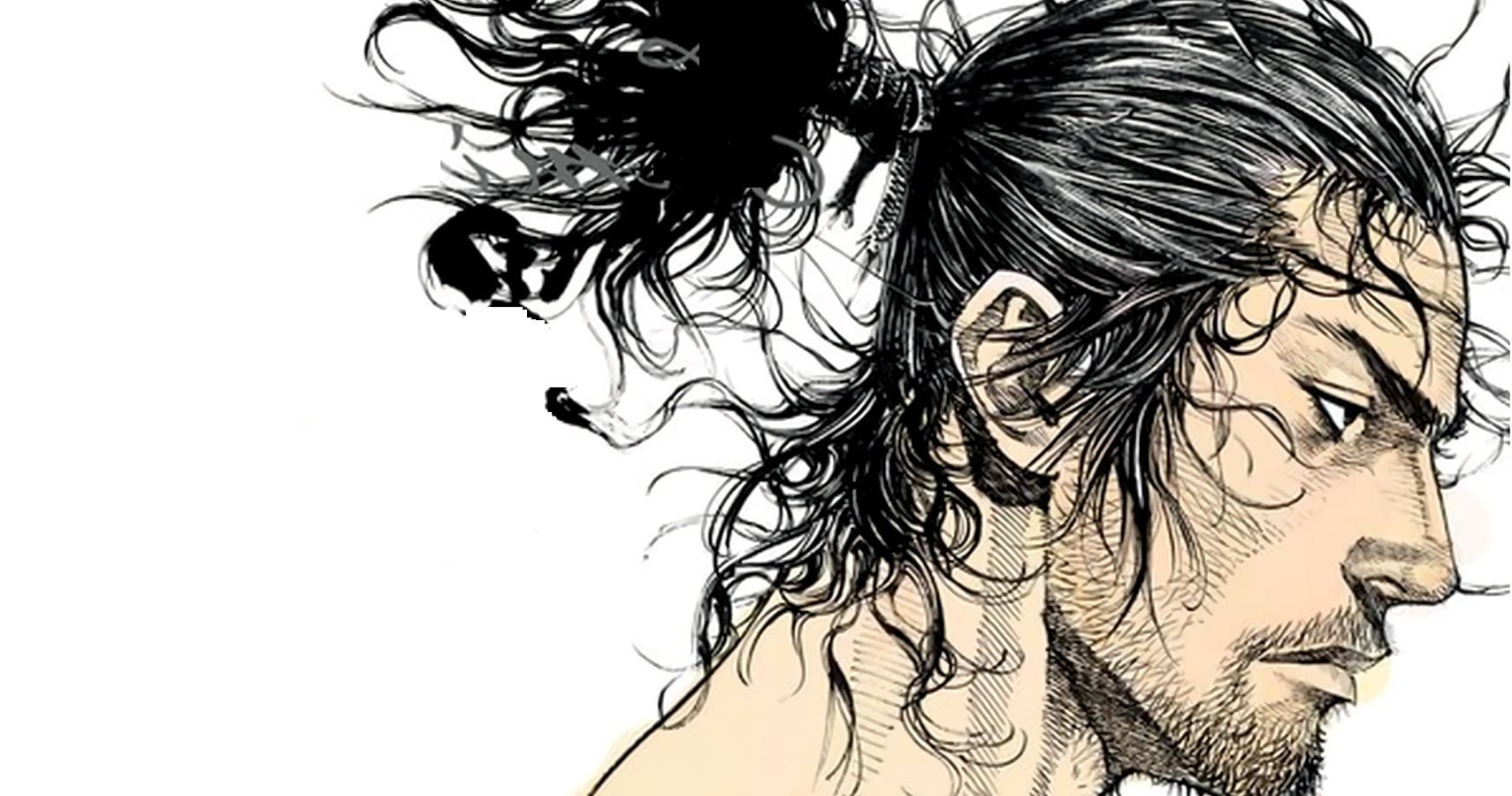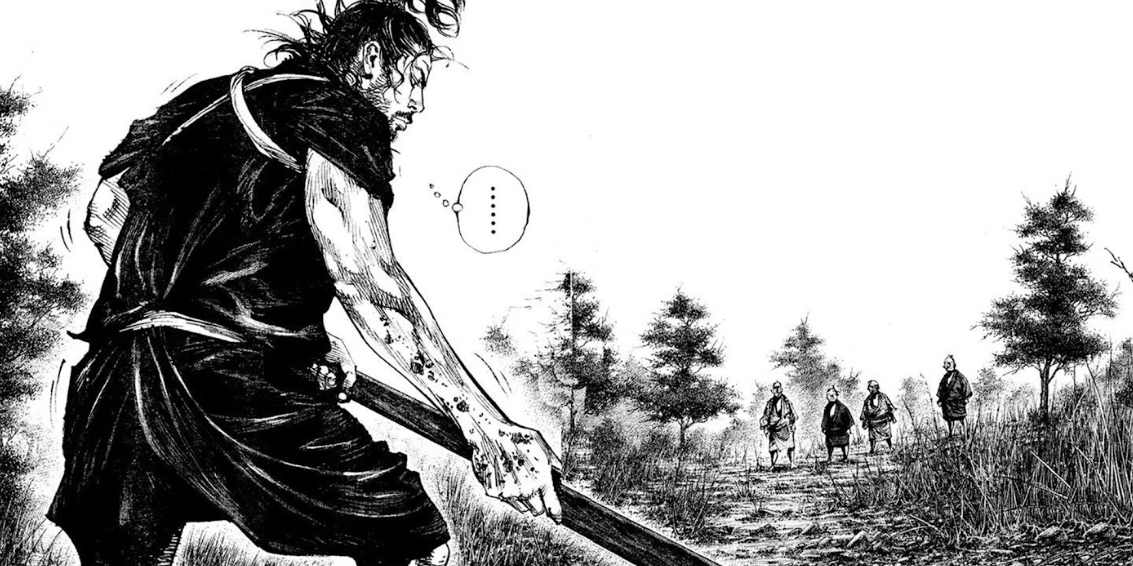Introduction
Vagabond, created by Takehiko Inoue, is a masterful work of manga that explores the world of samurai, honor, and personal growth. Based on Eiji Yoshikawa’s novel Musashi, Vagabond takes readers on a gripping journey through the life of the legendary swordsman, Miyamoto Musashi. The manga is not only a historical retelling but also a deeply philosophical exploration of identity, solitude, and the nature of life and death.
What sets Vagabond apart from other manga is its intricate storytelling, powerful character development, and breathtaking artwork. This guide will take you through the creation, themes, art, and cultural impact of Vagabond, highlighting why it remains one of the most influential works in the manga genre.
The Creation of Vagabond: A Masterpiece by Takehiko Inoue
Takehiko Inoue, renowned for his work on Slam Dunk, brings his immense talent to Vagabond, transforming a historical novel into an unforgettable manga. Vagabond is adapted from Eiji Yoshikawa’s Musashi, a fictionalized account of the life of Miyamoto Musashi, one of Japan’s most famous swordsmen. Inoue’s deep respect for the source material and his desire to present an authentic portrayal of Musashi’s journey led him to make several creative decisions that elevated the story beyond its original novel.
Inoue’s meticulous attention to detail, combined with his passion for historical accuracy, shines through in Vagabond. He took significant liberties in the adaptation, adding layers of philosophical introspection and psychological depth to the characters. The manga’s themes are deeply rooted in the samurai ethos, focusing on the concepts of honor, personal growth, and the meaning of life. The choice to illustrate Musashi’s evolution from a reckless and arrogant young warrior to a reflective, self-aware man was a key decision that made the series stand out in the genre.
Vagabond was first serialized in 1998 and quickly garnered widespread acclaim. Inoue’s art style, known for its realism and fluidity, combined with his storytelling skills, earned Vagabond numerous awards, including the prestigious Kodansha Manga Award and the Micheluzzi Award for Best Foreign Series. It became a major success both in Japan and internationally, gaining a dedicated fanbase and cementing Inoue’s reputation as one of the finest manga artists of his generation.
The Story of Vagabond: Plot, Themes, and Character Development

At the heart of Vagabond is the journey of Miyamoto Musashi, a young man who embarks on a quest to become the greatest swordsman in Japan. The manga follows his evolution from an impulsive and brash fighter to a wise and disciplined master of the sword. The story is rich with philosophical themes that explore the nature of conflict, the pursuit of self-perfection, and the struggles inherent in the path of a warrior.
Musashi’s journey is marked by encounters with other samurai, each of whom represents different facets of the samurai code and the path to enlightenment. One of the most significant figures in Musashi’s life is Sasaki Kojiro, a rival swordsman whose philosophy contrasts sharply with Musashi’s. Their rivalry becomes the central focus of the series, culminating in a legendary duel that is the culmination of their contrasting views on life and combat. Through these encounters, Musashi learns that the true meaning of strength is not found in defeating others but in overcoming oneself.
The themes of Vagabond are deeply intertwined with the philosophy of bushido, the samurai code of honor. Musashi’s quest is not only about mastering the sword but also about mastering his own inner turmoil and achieving a sense of peace. The manga delves into the human experience, questioning the nature of violence, the importance of solitude, and the cost of personal growth. As Musashi encounters death, betrayal, and loss, he begins to understand that true strength lies not in defeating others but in understanding oneself.
The development of Musashi’s character is one of the most compelling aspects of Vagabond. He begins as a reckless and impulsive young man, driven by a desire for fame and power. However, as he faces the realities of war and combat, he starts to question the purpose of his journey. Over time, he matures, becoming more introspective and understanding the deeper truths about life, death, and honor. This transformation is what makes Vagabond not just a tale of sword fighting but a profound exploration of the human condition.
The Art of Vagabond: A Visual Journey
The artwork of Vagabond is one of its defining features, and Takehiko Inoue’s art style plays a crucial role in bringing the story to life. The manga is known for its breathtaking, highly detailed illustrations that capture both the beauty and brutality of the samurai world. Inoue’s use of ink and brushwork gives the manga a dynamic and expressive quality, making every scene feel alive and immersive.
One of the standout features of Inoue’s art is his ability to convey emotion through the characters’ expressions and body language. The intense close-ups of Musashi’s face, often showing him in moments of contemplation or conflict, reveal the psychological depth of the character. Inoue’s use of shadow and light enhances the mood of each scene, creating a sense of drama and tension that complements the story’s themes of internal struggle and self-discovery.
The action scenes in Vagabond are equally impressive, with Inoue’s fluid and dynamic depictions of sword fights capturing the speed, precision, and intensity of the combat. The choreography of the battles is carefully planned, with each movement carefully illustrated to showcase the skill and strategy involved in the fight. These scenes are not just about action; they also serve to highlight the characters’ emotional states and personal growth. The visual storytelling in Vagabond is so powerful that it often conveys more than words could, allowing readers to experience the story on a deeper level.
In addition to the character-driven scenes, the landscapes in Vagabond are equally stunning. Inoue’s attention to detail in the backgrounds, from the serene Japanese countryside to the stark, battle-scarred fields, adds a layer of realism to the story. These settings are not just backdrops; they are integral to the narrative, reflecting the themes of isolation and the harsh realities of the samurai’s world.
The Cultural Impact of Vagabond: Legacy and Influence
Since its debut, Vagabond has left a lasting impact on the world of manga and popular culture. Its exploration of the samurai code and its philosophical themes have resonated with readers worldwide, making it a staple of the genre. Vagabond has influenced numerous other manga series, particularly those that deal with martial arts, personal growth, and historical fiction. Its blend of action and introspection has set a standard for storytelling in manga, proving that a comic can be both thrilling and thought-provoking.
The legacy of Vagabond extends beyond manga. The series has inspired several adaptations, including an anime project, although it has yet to receive a full anime adaptation. There have also been discussions of live-action films and television series based on the manga, further cementing its place in global pop culture. The enduring popularity of Vagabond speaks to its universal themes and timeless appeal, making it a must-read for anyone interested in the samurai genre or deep, character-driven narratives.
In addition to its influence on media, Vagabond has become a cultural touchstone for fans of samurai stories and manga. The philosophical questions it raises about the nature of violence, personal growth, and the search for meaning have made it a favorite among readers who appreciate literature that goes beyond simple action and entertainment. The series has also sparked a renewed interest in the history of the samurai and the cultural legacy of Japan, introducing new generations to the rich traditions of the country.
Conclusion
Vagabond is more than just a manga about sword fighting; it is a profound exploration of the human condition. Through the journey of Miyamoto Musashi, Takehiko Inoue has created a timeless work that combines breathtaking artwork, philosophical depth, and unforgettable characters. Whether you are a fan of samurai stories or simply someone looking for a vagabond manga that offers both action and introspection, Vagabond is a must-read.
The story of Musashi’s growth from a reckless youth to a wise warrior resonates with readers on a personal level, as it explores themes of honor, identity, and the meaning of life. Inoue’s art, with its meticulous detail and emotional depth, further enhances the impact of the story, making Vagabond a masterpiece of manga.





